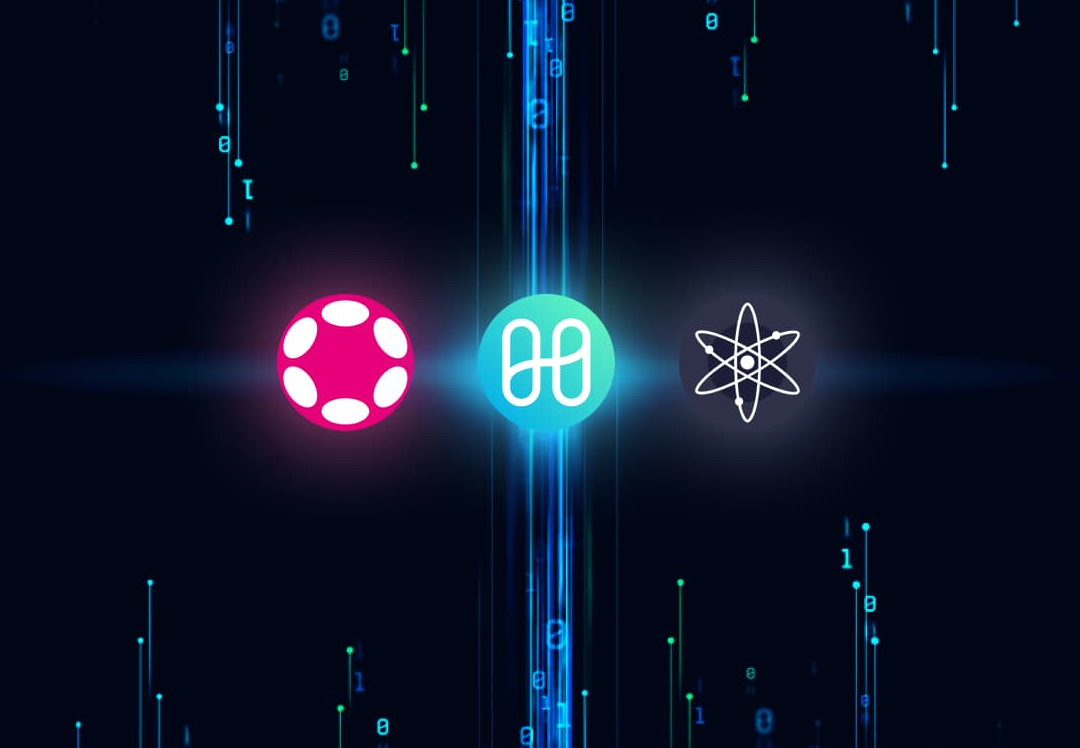What Problems Has The Success Of Blockchain Brought?
As new technology becomes popular, problems arise that necessitate the development of new solutions. Blockchain and cryptocurrency, like any other technology, are now confronted with their own set of issues.
The rapid growth of blockchain systems has caused network congestion and increased fees for completing blockchain transactions and computations. As a result, we're starting to see digital traffic congestion, which is motivating the development of new projects (freeways). However, increasing the number of digital roads would not solve the congestion problem if the roads are not connected.
The Technologies That Are Solving Blockchain Traffic Jams
The development of networks capable of transferring information across blockchains is one area of technical advancement. Harmony, Polkadot, and Cosmos are the three technologies that have been introduced to execute interchain communications.
Harmony
Harmony is an inter-blockchain system compatible with blockchains based on the Ethereum virtual machine. Harmony creates a new ethereum-based blockchain, with a bridge that allows tokens on Binance and Ethereum Mainnet to be converted to tokens on the Harmony blockchain.
Because Harmony uses the same virtual machine as both the Ethereum and Binance blockchains, it is straightforward to convert smart contracts from other ethereum-based blockchains into Harmony and then use tokens on Harmony bridged between Harmony and the other blockchains.
Harmony's drawback is that, while it is simple to create compatible systems with another ethereum-based blockchain, there is no simple means for Harmony to interact with a non-ethereum blockchain.
Polkadot
Polkadot is another technology intended for inter-blockchain communications and uses a framework known as Substrate. Polkadot has a blockchain verification mechanism that divides the blockchain into subchains known as parachains.
External blockchains, such as the Bitcoin or Ethereum blockchains, can be bridged by a single parachain, and the parachains can then interact with one another. Polkadot may be compared to a freeway, with each parachain being a lane and data from other blockchains as trucks on the freeway.
Cosmos
Cosmos uses a different mechanism for inter-blockchain communications based on the Tendermint blockchain. Cosmos is like an airline network rather than lanes on a freeway. External blockchains connect to a node in the same way as connecting to an airport. The airline would then connect the airports via a hub and spoke model in which a blockchain would connect to a small airport and then be routed through larger airports and then back to small airports.
Polkadot VS Cosmos
The difference in approach between Polkadot and Cosmos results in a distinct set of tradeoffs. Because all the data in Polkadot shards are different parts of a large blockchain, all the different parachains in Polkadot are synchronized with each other, making it easier to synchronize the data in the entire system.
Polkadot resembles a freeway, in which each car knows its position with respect to the other vehicles on the freeway, so if one lane gets blocked, cars in other lanes can react immediately. So long as there are other lanes available, the system will continue to operate.
In contrast, because Cosmos uses a system of relays, programming the blockchain is more complicated since it takes time for events in a node to propagate to the entire system. So using the airport analogy, if one airport is blocked, then there may be a lag before the aeroplanes at the other airport realize that one airport is blocked, and it becomes a more complicated problem to keep the system running.
Because Polkadot has a freeway system, there are only a few freeway lanes available, which means you may have traffic jams in the future. Conversely, because Cosmos uses an airport model, it is easier to add more capacity as needed. To limit the number of projects that can use the lanes in Polkadot, Polkadot auctions the lanes of the freeway. To show that you have enough financial backing to get yourself a lane, projects on Polkadot have to issue a crowd loan to their backers, which brings the project enough capital to get a lane in Polkadot.
What Projects Are Available On Each Of The Platforms?
These three systems are platforms, and the quality of a platform is determined by the applications that run on it. Harmony is integrated with the Ethereum ecosystem, allowing any application that employs an Ethereum compatible smart contract to be easily converted to and from Harmony. Polkadot and Cosmos both require new code, yet both actively encourage developers to build new systems on their platforms. While applications may be migrated between Ethereum and Harmony, Harmony enables developers to build native applications on their blockchains.
A list of projects based on Polkadot is available here, and a list of projects based on Cosmos is available here. There are already hundreds of different projects, all of which are associated with tradeable tokens. The following are some major projects.
On the Polkadot network, there are:
- Kusama (KSM) is the test network that Polkadot uses to test out new technology for the Polkadot network.
- Chainlink (LINK) - Network for blockchain oracles that gets external data into the Polkadot network.
- Moonriver (MOVR) - is a system for creating Ethereum compatible chains.
On the Cosmos network, there are:
- Thorchain (RUNE) - A decentralized exchange that allows swaps between coins, such as Bitcoin and Ethereum.
- Oasis Network (ROSE) - A protocol which allows for computation of private data.
- Osmosis (OSMO) is an example of a liquidity pool and decentralized exchange that allows for trading tokens between blockchains.
- Fetch.ai (FET) - Creates a blockchain system for doing machine learning and AI.
Examples of projects using Harmony include:
- DefiKingdoms(JEWEL) - Game built on the blockchain
- DaVinci (VINCI)- Digital art and NFTs
- Tranquil Finance (TRANQ) - Money market and liquidity on the Harmony blockchain
What Are Opportunities For Investors?
In terms of how you can benefit from these new technologies, each of the three platforms has issued tokens for platform usage and governance. These tokens are:
- DOT for Polkadot
- ATOM for Cosmos
- ONE for Harmony
Besides the platform tokens, each project using these platforms has issued its tokens. A list of tradeable tokens is available on CoinGecko via:
You can also take part in crowd loan projects on Polkadot to allow a project to access its own freeway lane on the Polkadot blockchain. A list of current auctions and crowd loan opportunities is available here.
We are in the early stages of the next chapter in the tale of cryptocurrencies. However, there are other new tokens and technologies on the horizon. Of course, like with any new industry, there is a high level of risk associated with most projects, as we witnessed with the Dot-com bubble and the early waves of cryptocurrency.
The wide range of fresh and diversified projects shows they are the world-changing companies of the future. Those who missed the first waves can still have the chance to catch this one.
*This communication is intended as strictly informational, and nothing herein constitutes an offer or a recommendation to buy, sell, or retain any specific product, security or investment, or to utilise or refrain from utilising any particular service. The use of the products and services referred to herein may be subject to certain limitations in specific jurisdictions. This communication does not constitute and shall under no circumstances be deemed to constitute investment advice. This communication is not intended to constitute a public offering of securities within the meaning of any applicable legislation.





